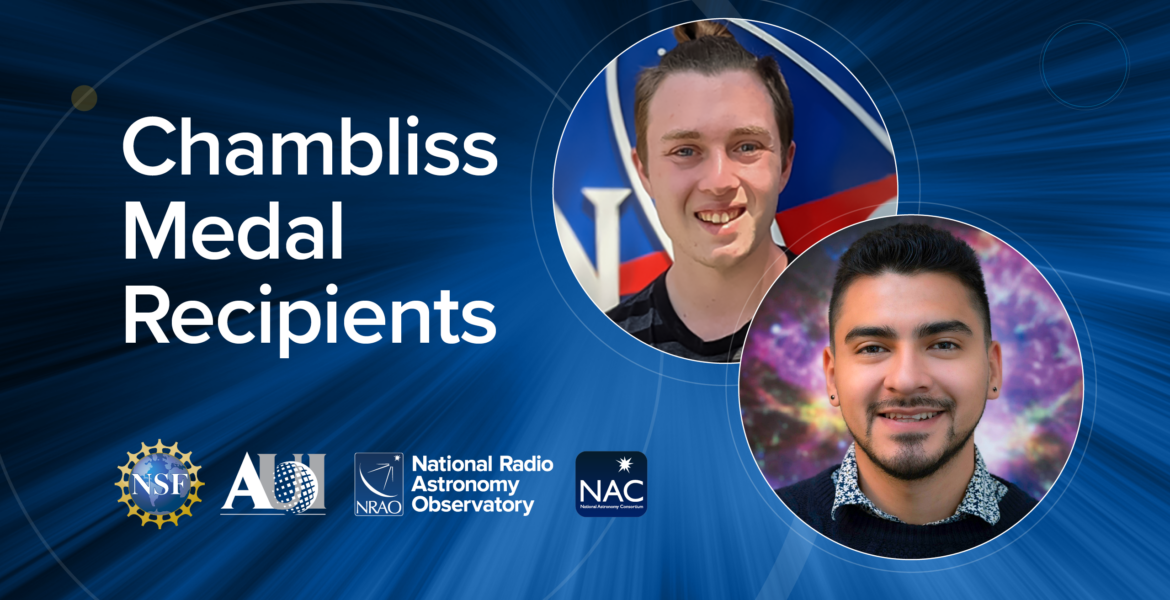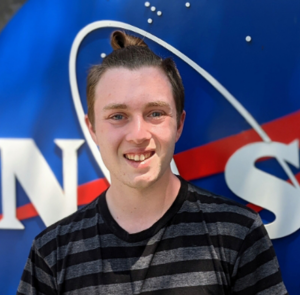AUI will present at the 247th meeting of the American Astronomical Society in Phoenix from January 4-8.
Recent News
ALMA Helps Unmask Monster Black Hole Behind Record-Breaking Cosmic Burst
Astronomers have used the Atacama Large Millimeter/submillimeter Array (ALMA) together with a suite of space- and ground-based telescopes, to study AT 2024wpp, the most luminous fast blue optical transient (LFBOT) ever observed.
Astronomers Make First Radio Detection of Rare Supernova Type, Revealing Secrets of Stellar Death
Astronomers using the U.S. National Science Foundation Very Large Array have captured the first-ever radio signals from a rare class of stellar explosion known as a Type Ibn supernova.
NAC Student Researchers Receive Prestigious Chambliss Medals at AAS 243

Credit: J. Hellerman (NRAO/AUI/NSF)
Two student researchers from the National Radio Astronomy Observatory’s National Astronomy Consortium (NAC) program were each awarded the prestigious Chambliss Astronomy Achievement Student Awards medal during the 243rd proceedings of the American Astronomical Society (AAS). Miguel Montalvo and Nicolas (Nico) McMahon completed their NAC summer research projects in 2023, and each received a Chambliss medal for exemplary research in astrophysics.
Miguel Montalvo, Princeton University
 Montalvo is a first-generation college student currently pursuing a Ph.D. in Astrophysical Sciences at Princeton University. He was awarded a Chambliss Medal at this year’s winter AAS meeting for his iPoster presentation on Active Galactic Nuclei (AGN).
Montalvo is a first-generation college student currently pursuing a Ph.D. in Astrophysical Sciences at Princeton University. He was awarded a Chambliss Medal at this year’s winter AAS meeting for his iPoster presentation on Active Galactic Nuclei (AGN).
Montalvo’s research used photometric data obtained from the Hyper Suprime-Cam survey (HSC) and the Wide-field Infrared Survey Explorer (WISE) to study Active Galactic Nuclei (AGN). “We found that both obscured and unobscured Type-1 AGN have similar low inclination angles and the obscuration seen in red quasars can’t be explained by the Unified Model alone.”
This is the second Chambliss medal Miguel has been awarded, having also won for work presented at AAS 241. While he is grateful for the research opportunities NAC has provided, Miguel most appreciates the sense of community the program fosters. “As part of the program, I’ve been able to present my research at the AAS meetings every year since I joined, and as a result, I’ve been awarded a Chambliss medal for my presentations,” he says. “Yet, the most important thing that has come from the NAC is a community of support where I feel valued and celebrated as a non-traditional researcher.”
Nicolas McMahon, Boston University
 McMahon was awarded a Chambliss Medal for his work on Type Ia supernovae (SNIa). These cataclysmic stellar explosions are used as “standard candles” to probe the rate of accelerating expansion of the universe. His study focused on the “Mass Step” relationship, which is an underlying correlation observed between the peak brightness of SNIa and the stellar mass of their host galaxies. “Using the Pantheon+ sample, the largest sample of SNIa to date, as well as cutting-edge computational tools like the spectral energy distribution fitting code Prospector, my team and I are working to understand how our methodology impacts the observed strength of the Mass Step relationship.”
McMahon was awarded a Chambliss Medal for his work on Type Ia supernovae (SNIa). These cataclysmic stellar explosions are used as “standard candles” to probe the rate of accelerating expansion of the universe. His study focused on the “Mass Step” relationship, which is an underlying correlation observed between the peak brightness of SNIa and the stellar mass of their host galaxies. “Using the Pantheon+ sample, the largest sample of SNIa to date, as well as cutting-edge computational tools like the spectral energy distribution fitting code Prospector, my team and I are working to understand how our methodology impacts the observed strength of the Mass Step relationship.”
Nico has been a lifelong stargazer but feels his NAC experience has been truly life-changing. “The NAC program has helped tear down barriers to access in my field. I have been able to travel across the country to conferences in Washington D.C., Portland, and New Orleans, and the NAC program has made it possible for me to gain experience sharing my work with experts and novices alike in forums I previously would not have had access to.” As a Queer, Latine astronomer, Nico is driven to make astronomy more accessible to marginalized communities and elevate the voices of other marginalized astronomers for the betterment of our shared community.
The Chambliss Astronomy Achievement Student Awards are juried by a volunteer cohort of professional scientists and other members of the astronomical community during the American Astronomical Society conference each January and June. View the full list of Chambliss award recipients.
The National Radio Astronomy Observatory is a facility of the National Science Foundation, operated under a cooperative agreement by Associated Universities, Inc.
About NAC
National Astronomy Consortium (NAC) is a program of the National Radio Astronomy Observatory, a facility of the National Science Foundation, operated under cooperative agreement by Associated Universities, Inc. NAC is a summer research experience program for undergraduate students in the United States who have been underserved by the traditional academic pipeline. The program aims to increase the number of students in STEM fields by helping them to build networks of support for success early in their academic careers and beyond.
This news article was originally published on the NRAO website on February 19, 2024.
Recent News
AUI to Attend AAS 247 Conference
AUI will present at the 247th meeting of the American Astronomical Society in Phoenix from January 4-8.
ALMA Helps Unmask Monster Black Hole Behind Record-Breaking Cosmic Burst
Astronomers have used the Atacama Large Millimeter/submillimeter Array (ALMA) together with a suite of space- and ground-based telescopes, to study AT 2024wpp, the most luminous fast blue optical transient (LFBOT) ever observed.
Astronomers Make First Radio Detection of Rare Supernova Type, Revealing Secrets of Stellar Death
Astronomers using the U.S. National Science Foundation Very Large Array have captured the first-ever radio signals from a rare class of stellar explosion known as a Type Ibn supernova.
